Shizuoka Prefecture rests on the eastern side of Japan’s main island. The prefecture is filled with mountainous nature in the west and seaside resorts in the east.
Shizuoka attracts international and domestic travelers yearly with its stunning views and opportunities to climb the world-renowned Mount Fuji. For those looking to relax, the prefecture’s popular Izu Peninsula is home to picturesque beaches with dozens of resorts and onsen. Shizuoka’s resort-forward coast makes it a common getaway for Tokyo urbanites, with the major city only an hour or two away. For tea lovers, the prefecture’s green tea is a must-have, given that Shizuoka is Japan’s largest producer of the astringent drink.
1. Mount Fuji

Almost synonymous with Japan, the world-renowned Mount Fuji is a true natural treasure and icon of the country. The mountain, which is actually an inactive volcano, has the highest peak in Japan at 3,776 meters (12,388 feet) tall. Mount Fuji rises in the north of Shizuoka on the border of nearby Yamanashi Prefecture. Three of the four mountain trails are located in Shizuoka and are open from July 10th through September 10th. During the relatively short two-month period, international and domestic hikers flood the area for the opportunity to climb the world-famous mountain. The experience is physically demanding yet rejuvenating as hikers leave their worries at the mountain’s base and persevere upward with the sole objective of reaching the summit.
Before starting the climb, many hikers visit Fujisan Hongu Sengen Shrine in Fujinomiya, a 17th-century shrine constructed to appease Fuji’s destructive eruptions. It is customary for climbers to purify themselves in the shrine’s Wakutama Pond before beginning their journey. Many hikers aim to reach Mount Fuji’s peak at sunrise. At this mystical hour, the sky is a canvas of oranges, reds, and pinks. The sun takes its place in the sky and illuminates the endless field of clouds that gather below the mountain’s peak. While Mount Fuji itself is truly stunning, visitors should not overlook the abundance of nature at its base. In the Asagiri-kogen Highlands, Lake Tanuki acts as a mirror, reflecting Mt. Fuji, the sky, and surrounding greenery in a truly mesmerizing view. Nearby, the enchanting Shiraito Falls cascade down the cliffside in a wall of water.
Mount Fuji is interwoven in Japanese culture. The sacred landmark has inspired generations with its impressive form and mystical atmosphere. The climb to the summit is not only a physical journey but a spiritual one. Given the mountain’s cultural impact, it is a required destination for those traveling to Shizuoka.
2. Izu Peninsula
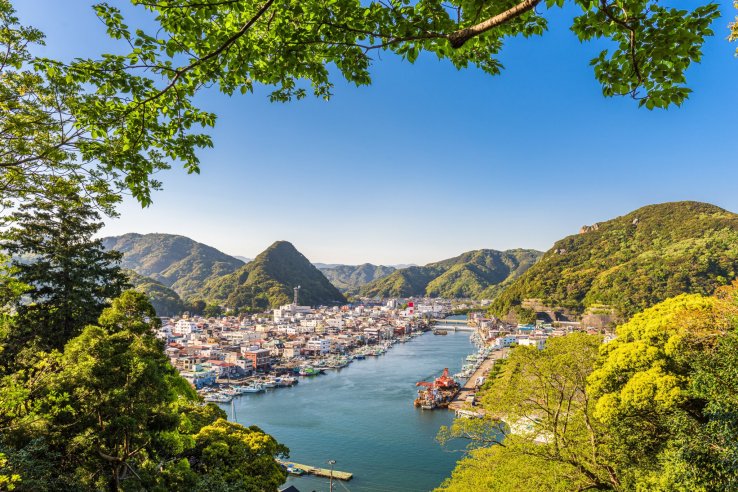
Resorts, hot springs, beaches, and nature galore! Izu Peninsula, located on the eastern side of Shizuoka, is a vacationer’s paradise. The area’s diverse destinations and mild climate lure travellers yearly with its relaxing, yet adventurous offerings. Izu’s eastern coast is densely populated with resorts and onsen, with the three major cities being Atami, Ito, and Shimoda. Visitors can soak in the area’s renowned hot springs or soak in the sun on its beaches. Juxtaposed with the commercialized east coast is the wilderness of the west. Izu’s western coast is significantly less developed than the eastern side, making it a popular getaway for avid hikers and nature lovers. Travelers can explore the relatively untouched environments of Irozaki Cape and Dogashima, which encapsulate the natural beauty of the peninsula with their rocky coastlines, hidden caves, and endless views of the ocean. The western coast also offers individuals the coveted opportunity to observe Mount Fuji. Of course, due to the nearly island-esque nature of Izu, its seafood offerings are unparalleled. Visitors can also travel inland and explore popular destinations such as the Izu Highlands and Mount Omuro.
3. Atami

Atami is an onsen town on the northeastern side of Izu Peninsula and opens up to Sagami Bay. With its hot springs and close proximity to Tokyo, the area is one of Japan’s top onsen resorts. The town is home to dozens of ryokan, some of which offer guests open-air hot springs, giving them magnificent views of the bay as they submerge themselves in the steaming water. While unwinding, guests can snack on the onsen’s appropriately named treat, onsen manju, which are soft steamed buns filled with sweet bean paste. After visitors heal their minds and bodies in the hot waters, they can explore other popular spots in the area, such as Atami Castle and MOA Museum of Art. Atami Castle was built in 1959 as a tourist attraction and is home to multiple floors of exhibits. The structure’s presence alone is impressive, yet its main lure is its stunning panoramic views of the city and ocean. For those looking to immerse themselves in culture, the MOA museum boasts a large collection of Japanese and East Asian artwork. After visitors peruse the artwork, they can visit the museum’s Japanese-style garden and tea house where they can end their day sipping on the region’s exquisite tea.
4. Jogasaki Coast

The Jogasaki Coast runs along the eastern side of Izu Peninsula and is situated between the cities of Ito and Shimoda. Although the coastline is located on the more developed side of the peninsula, its rugged wilderness feels isolated from the commotion. The coastline offers visitors a nearly ten kilometer hike through the area’s natural beauty. The coast’s unique shape was formed thousands of years ago when lava from Mount Omuro’s eruption spilled across the land. Jagged rocks, some barren and some interwoven with greenery, meet the Pacific Ocean in a foamy collision before transitioning into clear waters. The omnipresent hum of the tide’s push and pull composes a soothing melody that follows visitors throughout the hike. From the coastline, travelers can observe Oshima Island, which is a volcanic island off the coast of Izu. Other highlights along the trail are the Kadowaki Suspension Bridge, where visitors can walk 48 meters above the ocean; and Kadowaki Lighthouse, which has a free observation deck that provides hikers with breathtaking panoramic views of the ocean.
5. Kakegawa Castle

Nestled in the city of Kakegawa is a historic castle whose presence alone speaks of times past. Kakegawa Castle was first constructed in the late 1400s. The structure’s white facade gives it an ethereal presence as it seemingly blends into the sky with the passing clouds. The castle and surrounding grounds have exchanged hands throughout its history, and in 1854 it was severely damaged by an earthquake. Later, in 1994, the castle was rebuilt using traditional Japanese construction methods, the first and only of its kind, with the main building being entirely reconstructed using wood. One of the main features of the castle is Ni-no-Maru Goten, or the daimyo’s palace. This single-story building is where the feudal lord would have lived, carried out administrative duties, and performed ceremonies. The palace’s traditional tatami floors, dark wood detailing, and displays of weapons and armor offer guests a glimpse into the Edo period. The robust atmosphere of Kakegawa Castle is mesmerizing and fills visitors with an idealized longing for a time they will never know.
6. Kunozan Toshogu Shrine

Kunozan Toshogu Shrine, dedicated to Tokugawa Ieyasu, is the true physical resting place of the deity-status leader and a significant influence on the design of Toshogu Shrine in Nikko, Tochigi. Ieyasu lived out his final years in Sumpu Castle and requested to be buried on nearby Mount Kunozan. Shortly after Ieyasu’s passing, the second Shogun honored his request and ordered the shrine to be built.
Originally, guests had to climb over a thousand stone steps to visit the shrine, and today, many still do. While the trek up the mountainside is daunting, it offers beautiful views of Suruga Bay and spiritually connects visitors to the experience as their footsteps mimic those of shadows past. Today, guests can bypass the intimidating staircase and use a ropeway at Nihondaira Plateau to reach the shrine instead.
Upon entering the shrine, visitors will first see Romon Gate, easily one of the shrine’s most impressive structures. This massive gate is painted bright red with blue, green, and yellow accents, and silently commands respect from the shrine’s visitors. Past the gate, stands the main hall. The building’s exterior is colored black, making its already vibrant detailing more saturated. Red gates line the walkways. Mesmerizing golden dragons and intricate patterns of blue, red, and green decorate the roofs. The grandeur of the shrine is truly hypnotizing. Deep in the forest, Ieyasu is enshrined with two famous military commanders by his sides. The leader’s tomb exudes tranquil sacredness. The relatively simplistic stone structure is surrounded by low hanging trees and instead of vibrant coloring, is decorated naturally with moss. For more historical learning, guests can visit a museum, just outside the shrine grounds, that holds artifacts from the Tokugawa family.
7. Miho no Matsubara

Some views must be seen to be believed. Miho no Matsubara is a pine grove along Suruga Bay well known for its surreal views of Mount Fuji. The area was designated as a World Cultural Heritage site in 2013 in conjunction with Mount Fuji’s designation. Twisted pine trees rise in the distance as Suruga Bay laps against the rocky shore. The moving tide creates a path of white foam that points to the recognizable snow-capped form of Mount Fuji. The enchanting scene has captured people’s attention for generations, even inspiring the famous Ukiyo-e master, Utagawa Hiroshige to immortalize the view in his artwork. The otherworldly environment is further represented in Hagoromo no Matsu, a notable pine tree in the grove. The ancient tree is linked to a legend about a celestial maiden who left her robe on one of its tree’s branches while she bathed in the bay. A fisherman stole her garment and forced the maiden to perform a heavenly dance in return for the clothing. The centuries old tree still exists, and is recognized yearly by a nearby Noh theater performance.
8. Nihondaira

Nihondaira, a plateau near Suruga Bay, entices travellers with its magnificent panoramic views, which many consider some of the best in Japan. From the plateau’s summit, visitors are treated to an expansive scene. Vibrant tea plantations blanket the foreground in green and melt into the distant views of Shimizu Port, Miho no Matsubara, and Izu Peninsula. Farthest away, yet towering above the conglomeration of city life, water, and forest, is the unmistakable form of Mount Fuji. A popular spot to observe the panorama is Yume Terrace, which translates to Dream Terrace. The observation deck lives up to its name by giving travellers access to a 360-degree balcony. The Nihondaira Ropeway offers additional perspectives of the landscapes and acts as transportation to the nearby Kunozan Toshogu Shrine. After sightseeing, visitors can refuel with the Shizuoka’s renowned green tea and its similarly flavored taiyaki, which are fish-shaped cakes.
9. Oigawa Railway

Oigawa Railway is a train system reminiscent of the early days of industrialized travel with its operational steam locomotives. Despite being decades old, these trains run daily from Shin-Kanaya Station to Senzu. The vehicles’ slick black exteriors, appropriately loud mechanics, and billowing trails of steam create an immersive experience. Visitors can ride the trains through the picturesque countryside, traveling alongside the Oi River, lush tea fields, and cherry blossom blooms in the springtime. For a more relatable touch of nostalgia for younger generations, the railway offers train rides on Thomas the Tank Engine, an authentic steam locomotive recreated to look like the popular children’s show character. In addition to the Oigawa main line, is the Ikawa line. The Ikawa line, or Southern Alps Abt line, is the only Abt system in Japan, which is a specialized rack-and-pinion railway created for elevated mountain travel. The Ikawa line starts in Senzu and travels to Ikawa. While this line does not include steam locomotives, its bright red trains take travellers through a number of unique spots. The Ikawa line not only includes the steepest railway in Japan, but also Seki no Sawa Bridge, which is the highest railway above a riverbed in the country. Train travellers can also stop by Okuoikojo Station, which is an unstaffed station popular for its photogenic waterside views and enjoy the surrounding natural beauty of the Southern Alps throughout the ride.
10. Shuzenji Temple

Shuzenji Temple, located in the Shuzenji Onsen resort town on Izu Peninsula, was established in the 9th century by Kobo Daishi, a Buddhist monk and founder of Shingon Buddhism. The small temple, nestled among the trees, is the picture of tranquility. Exposed wooden detailing decorates the facade, creating a humble naturalistic feel. The peaceful scenery is extremely deceiving though, as the temple was the site of inter-family power struggles and tragedies. In the 12th century, Minamoto Yoritomo, the first Shogun of the Kamakura Shogunate, imprisoned his brother, Noriyori, on the temple grounds, where Noriyori was either murdered or committed suicide. Later Yoritomo’s son, Yoriie, who was next in line for Shogun, was assassinated in a plot devised by his maternal grandfather, consequently ending the Minamoto family line. Yoriie’s eerie death mask is displayed in a nearby museum. While in the area, visitors should also enjoy the famous hot springs. Tokko-no-Yu, a river that flows near the temple, is Izu’s oldest hot spring and today functions as a free hot spring foot bath. The area is rich in natural scenery and history, making Shuzenji Temple a must-see in Shizuoka.
Staying in Tokyo?
Check out the top destinations in Tochigi — another nearby prefecture!
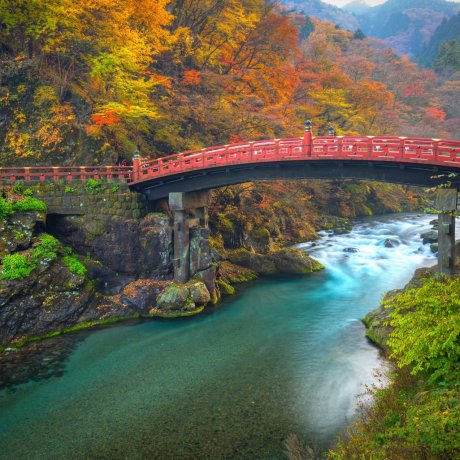
Tochigi: Top 10 Things to Do
Tochigi Prefecture is filled with quaint charm, making visitors feel like they are stepping into old Japan. The area's immaculately..

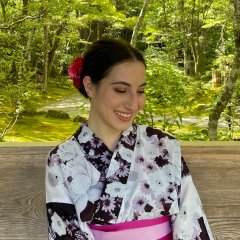
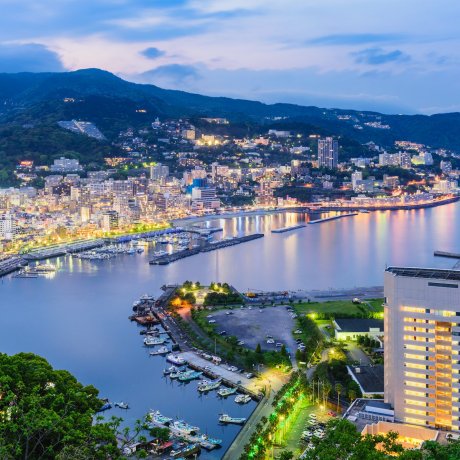
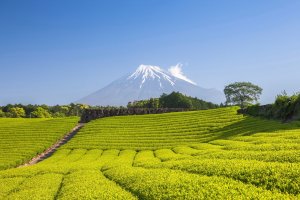
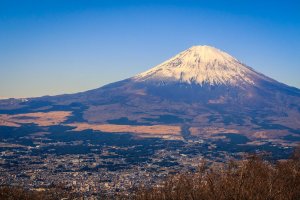

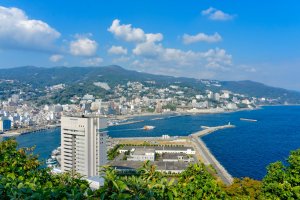

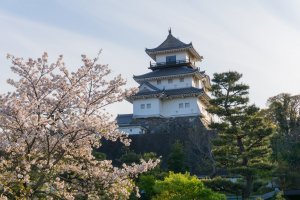


























Most of my visits to Shizuoka were however planned around matsuri or other events:
* Shizuoka Daidogei World Cup is the world's biggest street artist festival. Book accommodation well ahead, as with over 1.5 million visitors evrything will be packed. Expect performances like this: https://youtu.be/05SBcF_Ro48
* Hamamatsu Matsuri is one of the most unique and spectacular matsuri I've visited, especially during the day with all of the huge kites. If you can't make it during the matsuri, there's also a nice museum about it.
* And maybe a bit specific, but Shizuoka is home of several major manufacturers of plastic model kits, so it's no surprise the Shizuoka Hobby Show is one of the best in its kind.
https://en.japantravel.com/shizuoka/street-performance-world-cup/24554
Some more performances from 2016:
https://www.youtube.com/watch?v=7wZzZUub9sI
https://www.youtube.com/watch?v=AyoI1O3Ed9g
https://www.youtube.com/watch?v=-i09YcY9ZOI
https://www.youtube.com/watch?v=cZscnUKnSsM
https://www.youtube.com/watch?v=4iKBY4H9KHk
https://www.youtube.com/watch?v=UGst8057sYA
(there were just too many amazing performances....)
In spring 2017 I also visited the Yokohama Daidogei, which is a lot smaller but still a lot of fun! (http://daidogei.jp/ - at one of the pictures you can spot me in the crowd!)